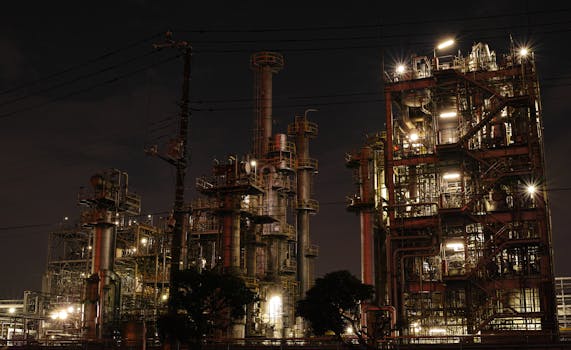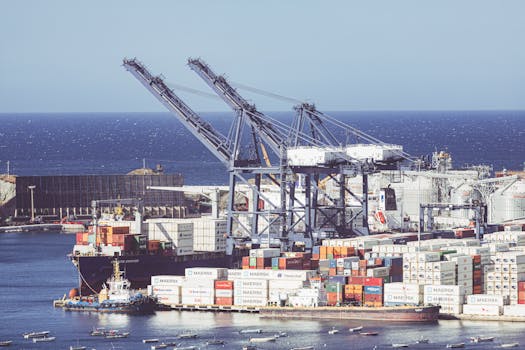Companies with the best and the worst technicals.
Lists of companies in NSE500 with the best and the worst technicals...
Lists of companies in NSE500 with the best and the worst technicals...
Lists of companies in NSE500 with the best and the worst fundamentals...
List of the latest important filings for NSE500....

The article discusses the significant impacts of the recent bombings in Iran...

The potential closure of the Strait of Hormuz by Iran could lead...

An in-depth analysis of Amazon's recent workforce reductions in 2025, focusing on...

The automotive industry has become a focal point of international trade discussions, particularly as Japan's auto exports navigate a complex landscape shaped by evolving tariffs and trade policies. As of June 2025, the ramifications of tariff fluctuations have deeply impacted the dynamics of Japan's automotive exports, compelling manufacturers and suppliers to engage in significant adjustments within the global supply chain.
Japan’s auto exports, valued at approximately ¥4.5 trillion ($41 billion) in 2024, faced a turbulent environment due to fluctuating tariffs imposed by major trading partners, notably the United States and the European Union. Recent financial year reports indicated a 7% decrease in export volume, attributed primarily to tariffs that ranged from 15% to 25% on certain vehicle categories. As these barriers increased, Japanese automakers, including giants like Toyota, Honda, and Nissan, began reevaluating their export strategies and production locations to maintain competitive pricing.
To mitigate the adverse effects of tariffs, several Japanese auto manufacturers have begun relocating portions of their production to countries with lower tariff rates. For instance, Toyota announced plans to increase its output in Thailand and Indonesia, where local assembly could bypass hefty tariffs when exporting to regions like the ASEAN market and even Europe.
Moreover, the automaker has committed to investing ¥600 billion ($5.5 billion) in expanding its facilities in these Southeast Asian countries. This decision reflects a broader trend among Japanese manufacturers to diversify their production bases, aiming to reduce dependency on Japan-centric manufacturing in light of global tariff uncertainties.
In response to the shifting tariff landscape, Japanese automakers are also reconfiguring their supply chains to enhance efficiency and reduce costs. With a heightened focus on local sourcing of components, companies are increasingly collaborating with regional suppliers to bolster their logistics frameworks. For example, the supply chain of Honda recently integrated more localized Japanese vendors within the Asia-Pacific region to manufacture critical parts, thus minimizing costs associated with long-distance shipping and tariffs.
This form of supply chain adjustment is especially pertinent as various regions, from North America to Europe, implement stricter trade regulations as a result of trade tensions. Automakers that proactively adapt their supply chains are likely to safeguard their market shares while maintaining operational resiliency.
In conjunction with logistical and production adjustments, technology adaptation plays a pivotal role in counteracting tariff impacts. Japanese automakers are investing in advanced manufacturing technologies, including automation and artificial intelligence, to streamline processes and reduce overall production costs. The direct correlation between technological integration and improved competitiveness allows these companies to maintain pricing strategies that withstand tariff-induced pressures.
Furthermore, innovations in electric vehicle (EV) technologies are shifting priorities in production lines as demand evolves rapidly. As of early 2025, EVs constituted 25% of Japan’s auto exports. Amid rising global demand for electric vehicles, Japanese manufacturers are increasingly focusing on this segment. Consequently, tariffs on conventional internal combustion engine vehicles have less impact on their overall output as they pivot towards electrification.
The increasing tariffs have led to a reexamining of international partnerships. Japan's major automakers are increasingly forming alliances with local automotive firms in target markets to ensure compliance with trade policies while amplifying market penetration. For instance, Nissan forged an alliance with a Brazilian automotive firm to capitalize on the lucrative South American market, enabling vehicle sales without direct exposure to high tariffs.
This collaborative strategy exemplifies how Japanese automakers are leveraging local expertise and distribution networks to navigate global trade hurdles effectively. These partnerships not only shield companies from tariff volatility but also create avenues for shared technological advancements.
On a broader scale, the ongoing negotiations related to trade policies amongst major economies have allowed Japan to engage in dialogues with the U.S. and EU, advocating for fairer tariffs on automotive exports. The Japanese government, represented by the Ministry of Economy, Trade and Industry, is actively pursuing trade agreements aimed at establishing equitable automotive tariffs. By fostering open discussions with trade partners, Japan seeks to ensure the competitiveness of its automotive sector while managing the complexities of global trade.
As the global supply chain continues to evolve and the landscape of tariffs remains uncertain, Japanese automakers must stay agile and innovative to not only navigate the present challenges but also to seize future opportunities in a shifting market ecosystem.

Meta Platforms Inc. has initiated a $100 million strategy to attract top...

Significant legislative momentum is building in the U.S. Senate regarding stablecoin regulation,...